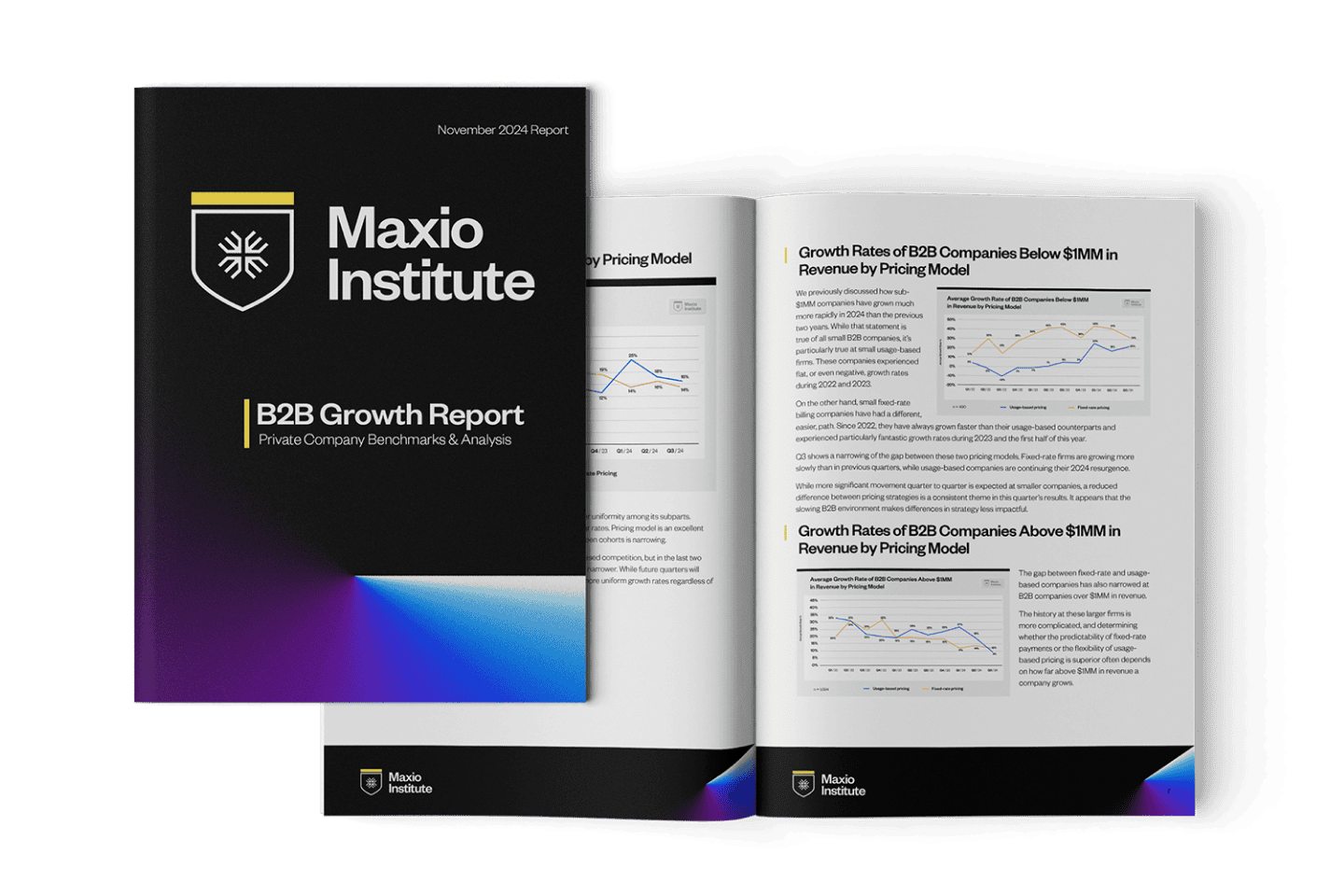To say that 2020 has come with a unique set of challenges would be putting it lightly. The macroeconomic impacts of Covid-19 have put a strain on many industries, but it has brought about strategic changes for companies as they try to decrease burn rates, keep customer churn low, and learn how to do things more efficiently.
In this post, which was derived from a recent webinar entitled, “Preparing for SaaS Funding Part 1: Evaluating Your Funding Options,” co-hosted by Maxio and Mountainside Ventures, we’ll walk you through some SaaS funding basics and help you position yourself for success in your fundraising endeavors amidst the macroeconomic headwinds of the coming year.
We’ll answer some of the common questions founders have regarding when to raise funds, what funding options are out there, and how to best present your company’s metrics and financial data to potential investors.
When’s the right time to raise institutional funds?
Unfortunately, there’s no definitively “right” time to raise funds. A variety of factors can influence your readiness to go to market. However, there are a few tell-tale signs it’s the wrong time to raise funds.
Firstly, fundraising almost always takes longer than expected, and many founders wait too long to start the process and end up running out of money. You should have a solid understanding of your cash runway and back into your fundraising timeline from there.
Another factor you need to consider is your ability to produce repeatable business metrics to prove that you’ve executed against a plan in the past and can do it again. If you can’t produce these metrics, it may not be the right time to raise funds.
Building the rocketship vs. fueling the rocketship
Mountside Venture’s Jon Steinberg hit the nail on the head when he compared VC lenders to gasoline salespeople.
As a founder, your job is to build the rocketship. A VC’s job is to supply the fuel that will hopefully get you to the moon. So VCs are often looking for companies that already have the core infrastructure needed to grow and just need capital to deploy the plan.
How do you know if the rocketship is built? According to Steinberg, a good litmus test for this is to ask yourself, “Am I ready to replace myself as the Head of Sales at my company?”
Obviously, no one will sell your product as well as you do, but you need to have a high degree of confidence in the people you bring on because fundraising is going to require a significant time investment on your part when you go out to market.
At the end of the day, whether you’re going VC or PE, procuring funding is all about your company’s ability to return the fund. If you don’t have the building blocks in place to prove the firm’s ROI, you’re likely to get shown the door quickly. Need to calculate ROI? Try out our ROI calculator.
What other options are available beyond equity funding?
The reality is, VC and PE funding isn’t right for everyone. In fact, most businesses are lifestyle businesses with much less aggressive growth objectives.
So what are your options if VC or PE-backed funding isn’t right for you? Luckily, there are a few options:
Revenue-based financing
Essentially, revenue-based funding acts as a line credit based on your ARR. For example, a firm may loan you 3X your ARR. While this is a viable alternative to VC or PE-backed funding, understand that revenue-based financing is a loan that you have to pay back.
Grants
Another option for fund seekers is to apply for grants. Grants are non-dilutive funding in exchange for meeting some type of government objective. In Europe, in particular, there are various grants issued to companies who are building products that will have a positive impact on things like healthcare access, the environment, etc.
Some examples of these programs are Innovate UK and the EU’s Green Deal Programs.
Debt-based financing
Debt-based financing is non-dilutive capital extended in the form of credit. Examples of this type of funding include furlough schemes, government underwritten loans, and government matching funds, such as the EU’s BBI fund and SaaS Capital, based here in the US.
What can I do to prepare for the SaaS funding process?
There are several things you can do to ready yourself for the funding process:
- Prepare two years of GAAP/IFRS financials and complimentary subscription metrics
- Prepare a detailed plan for how you’ll deploy the funds
- Create a 5-year forecasted financial model
- Create an Investor FAQ so you can shoot over answers to common due diligence questions (bonus: it makes it look like yours is a competitive deal)
- Prepare your undiluted and fully diluted cap table
- Consistently update your “data room” with monthly financial statements and board meeting notes to expedite your next round
How can I paint the best picture of my financials and metrics?
When it comes to presenting your financials and metrics in a positive light, both Steinberg and Whitfield recommend a couple of things. The first is to be able to speak to your numbers credibly.
It’s one thing to be able to rattle off numbers, but it’s another thing entirely to be able to dig in and demonstrate a deep understanding of the impact these numbers have on your business.
Another common mistake Whitfield sees founders make is not segmenting their customer data enough. You need to be able to provide a full cohort analysis to show investors how each of your customer segments performs and their impact on the business as a whole.
Some useful metrics to keep in your back pocket at all times (hint: financial metrics and subscription metrics are different!)
- Financial metrics: Billings, Bookings, Cash & Revenue
- Subscription metrics: ARR/MRR, CLV, Churn & Churn Rate, Retention and Retention Rate, CLV:CAC ratio, & Customer LTV
We hope you’ve found these tips on how to navigate SaaS funding helpful.
You can watch the full webinar here, and you can register for the second part of the Preparing for SaaS Funding webinar series here.


